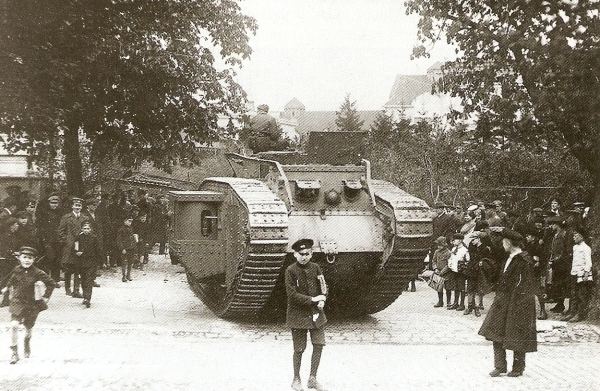 | ||
Two years after the end of the Estonian War of Independence (1918-1920), the Estonian Army consisted of 3 field divisions and a number of small independent battalions and companies (1922).
Contents
The Republic of Estonia had 47,750 km2. of territory with a population of 1,507,000 inhabitants. The armed forces had 12,000 men and, in the opinion of the Lithuanian armed forces General staff, it was large enough to defend The Republic of Estonia. Estonia had a good position - two big lakes were useful natural obstacles. The serving time for conscripts was 18 months in infantry, 24 months in other parts of the army, 36 months in the Navy.
In 1919, the year's military budget was EEK 573.6 million which was 80.3% of all states outcomes. Two years later, in 1921, state outcomes for defence were EEK 640.4 million (50% of the state budget). But it was too little, so the real military outcomes were EEK 856 million.
Infantry
Infantry organisation
The army had 12 line battalions. Every battalion consisted of:
Infantry was using Russian made and English made rifles, accoutrements and ammunition were American made. Two battalions make a regiment in peace time. After the mobilisation every battalion become regiment.
Comparison of companies
Artillery
There was 3 regiments of light artillery of 4 batteries everyone for every Infantry division. There were 2 groups of heavy artillery like separate units. Every battery had 4 guns. Most part of the guns - 3 inches Russian guns. There were some English French and German guns. In that time Estonia had enough guns to make artillery two times larger.
Cavalry
It was one regiment of Hussars. After the mobilization squadrons would become regiments.
Technical formations
Armoured trains had an important role in Estonian War of Independence. They were used very effectively in supporting Latvians in fighting against Bermontians in Latvian War of Independence.
Aviation
3 squadrons – 34 planes and hydroplanes
The Navy
EML Lembitu (gun boat)
EML Lennuk (former Avtroil)(destroyer)
EML Wambola (former Kapitan 2. ranga Kingsbergen,Kapitan 1. ranga Mikluhho-Maklaiks,Spartak)(destroyer)
EML Ristna (minesweeper)
EML Suurop (minesweeper)
